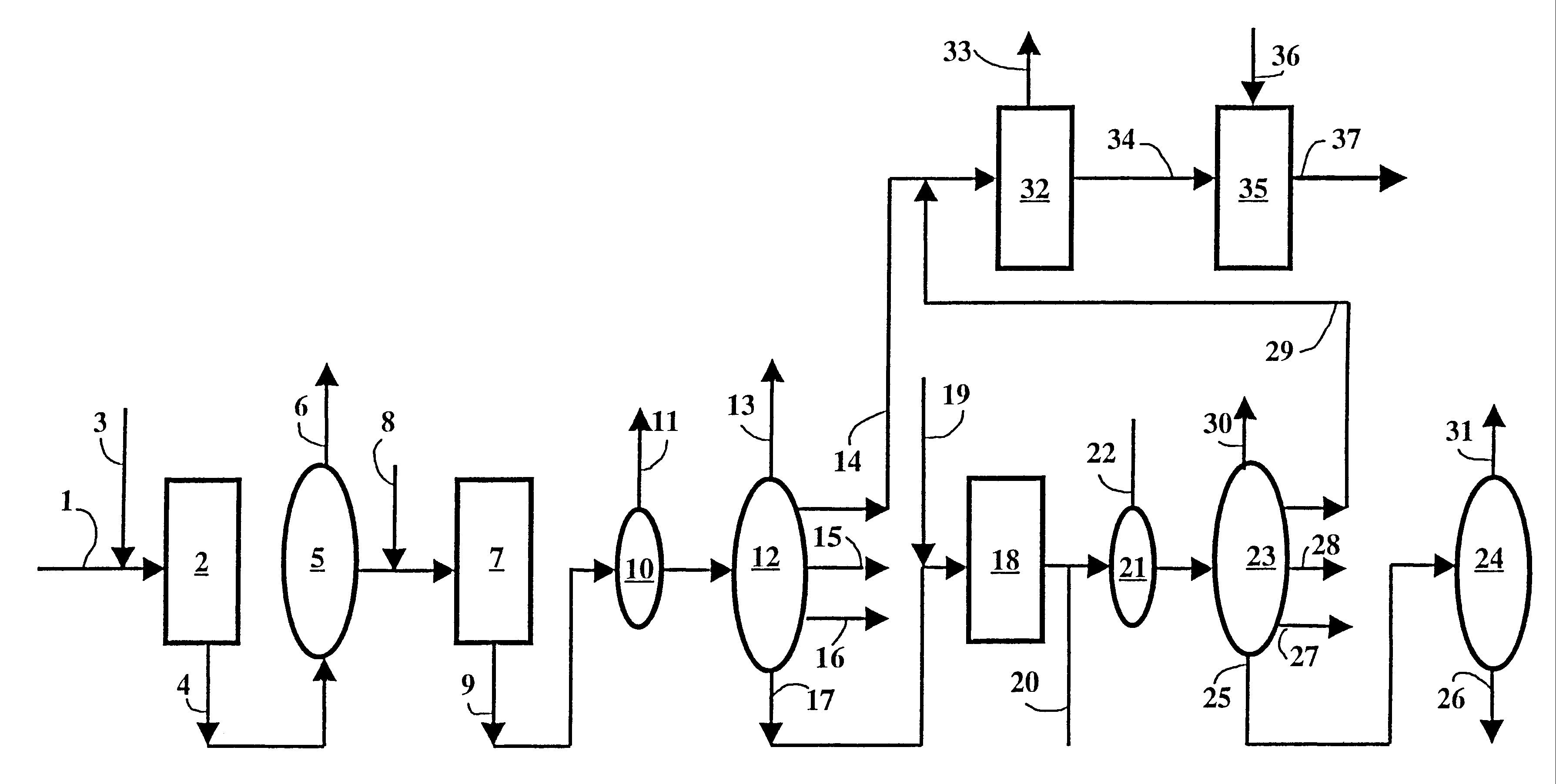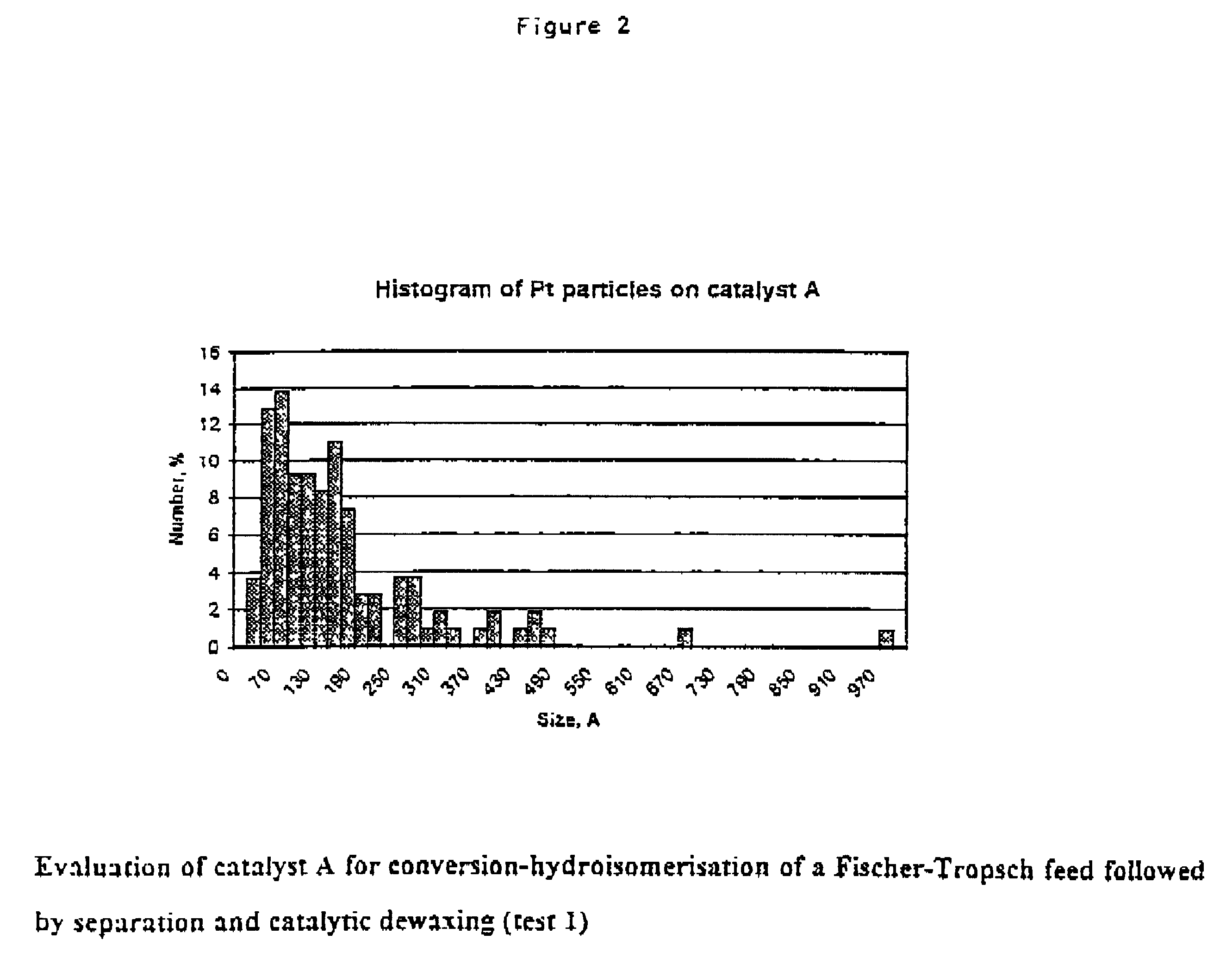Process for producing gasoline with an improved octane number
- Summary
- Abstract
- Description
- Claims
- Application Information
AI Technical Summary
Benefits of technology
Problems solved by technology
Method used
Image
Examples
Embodiment Construction
Preparation of Conversion-hydroisomerisation Catalyst A of Step a)
The support was a silica-alumina used in the form of extrudates. It contained 29.3% by weight of silica SiO.sub.2 and 70.7% by weight of alumina Al.sub.2 O.sub.3. Before adding any noble metal, the specific surface area of the silica-alumina was 330 m.sup.2 / g and its total pore volume was 0.87 cm.sup.3 / g.
Corresponding catalyst A was obtained after impregnating the noble metal onto the support. A platinum salt Pt(NH.sub.3).sub.4 Cl.sub.2 was dissolved in a volume of solution corresponding to the total pore volume to be impregated. The solid was then calcined for 2 hours in moist air (partial pressure of H.sub.2 O=0.15 bars) at 500.degree. C. The platinum content was 0.60% by weight. The pore volume, measured on the catalyst, was 0.82 cm.sup.3 / g. The BET surface area, measured on the catalyst, was 287 m.sup.2 / g and the mean pore diameter, measured on the catalyst, was 7 mm. The pore volume corresponding to pores wit...
PUM
| Property | Measurement | Unit |
|---|---|---|
| Length | aaaaa | aaaaa |
| Fraction | aaaaa | aaaaa |
| Fraction | aaaaa | aaaaa |
Abstract
Description
Claims
Application Information
 Login to View More
Login to View More - R&D
- Intellectual Property
- Life Sciences
- Materials
- Tech Scout
- Unparalleled Data Quality
- Higher Quality Content
- 60% Fewer Hallucinations
Browse by: Latest US Patents, China's latest patents, Technical Efficacy Thesaurus, Application Domain, Technology Topic, Popular Technical Reports.
© 2025 PatSnap. All rights reserved.Legal|Privacy policy|Modern Slavery Act Transparency Statement|Sitemap|About US| Contact US: help@patsnap.com



